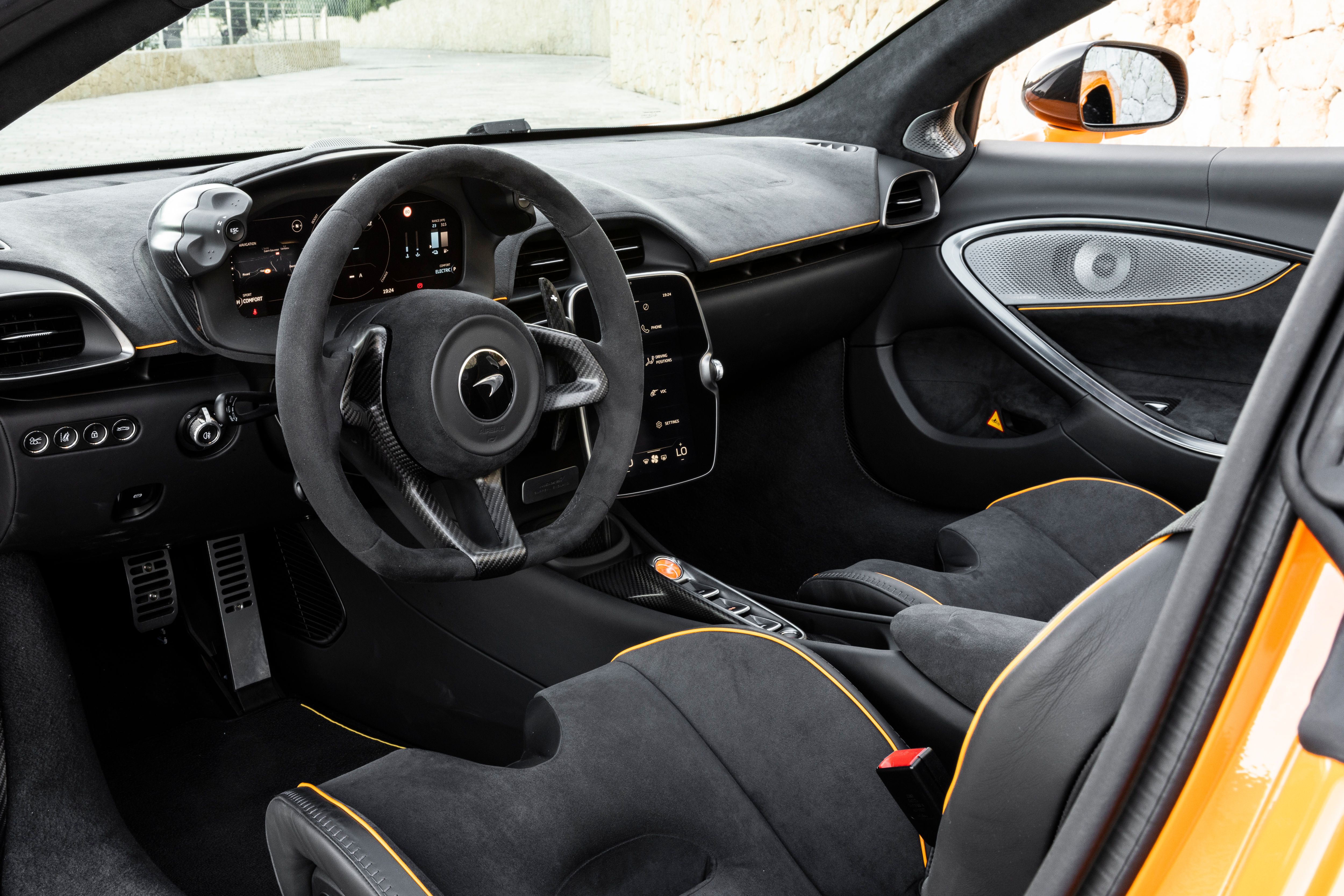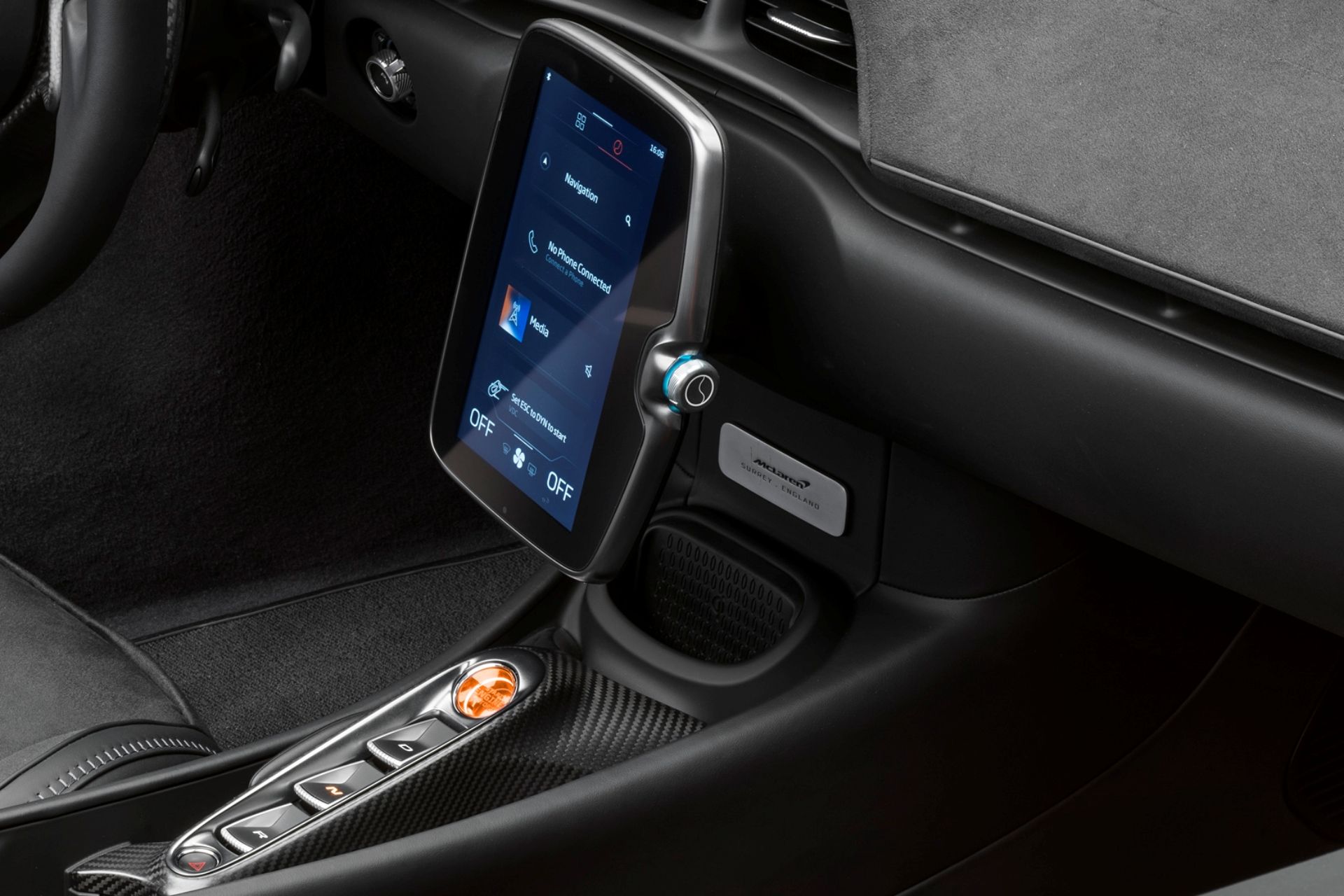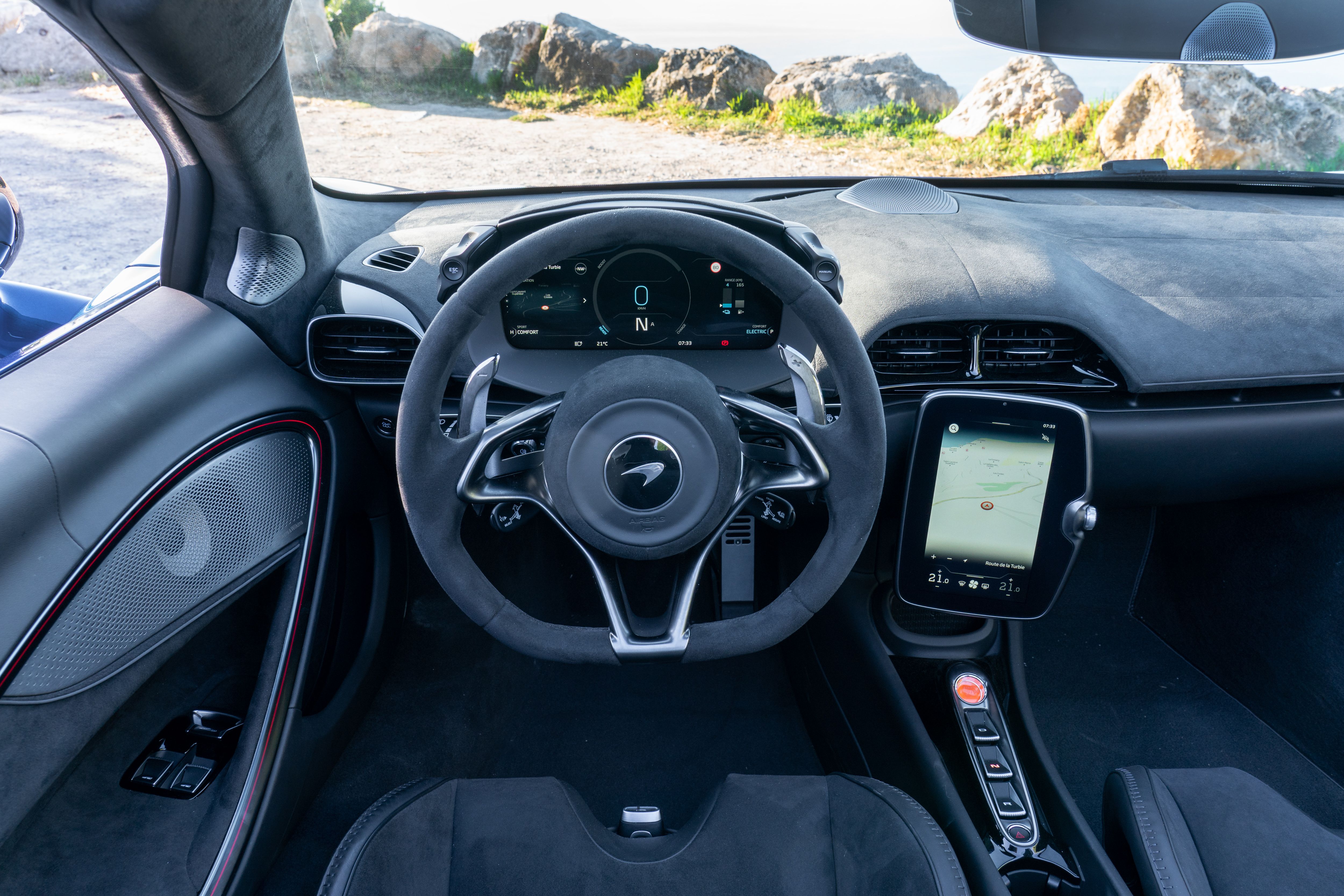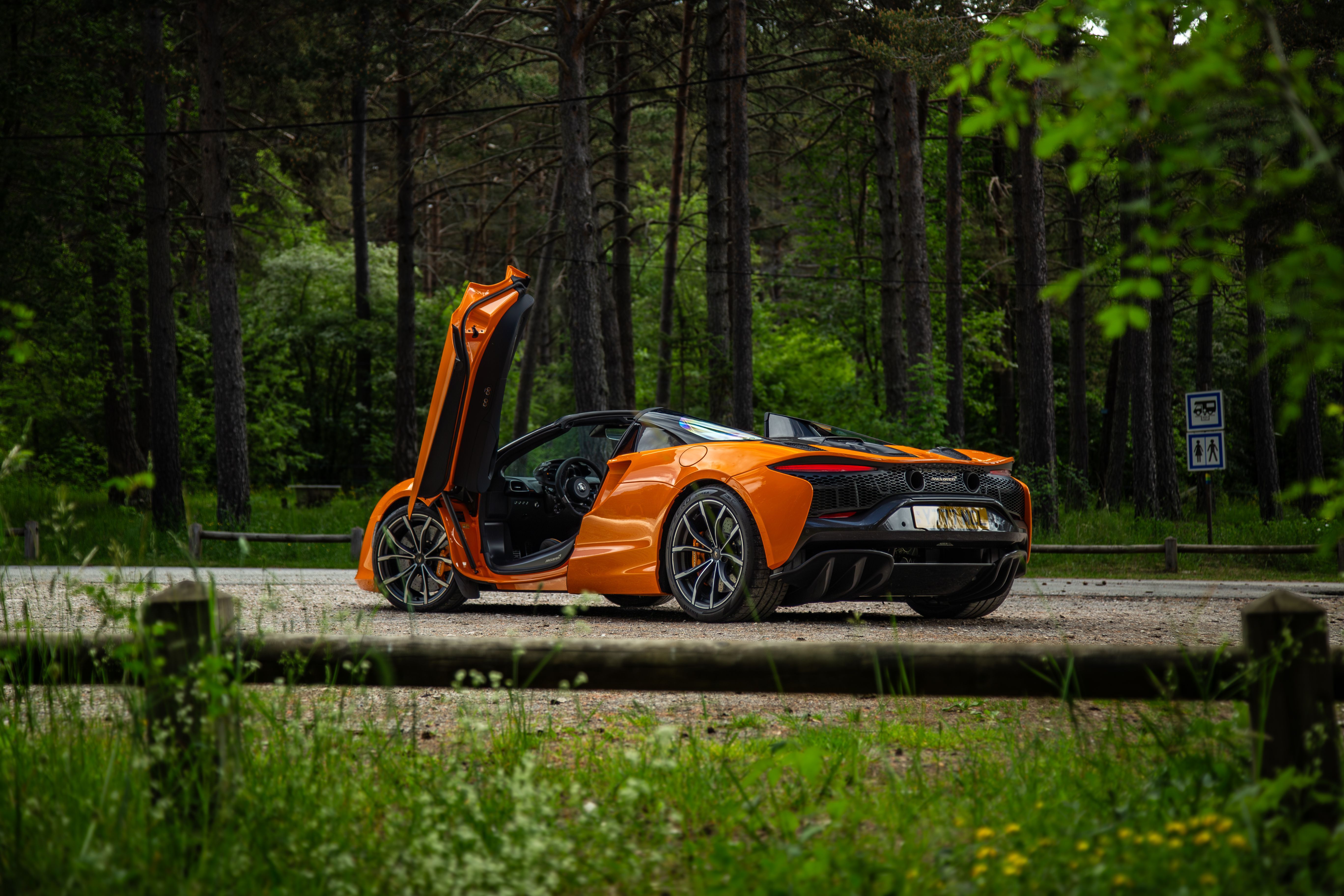
Here Are 6 Things I Loved After Driving The New McLaren Artura Spider (And 3 That I Didn’t)
I just got back from driving the new McLaren Artura Spider in Monaco, including a low-speed jaunt around the Monaco Formula 1 Grand Prix circuit, fulfilling a childhood dream of mine. There’s a full first drive report for you to read, but for those who don’t want all the technical spiel, here’s a quick rundown:
The Artura Spider is McLaren’s most junior convertible model, as the GTS doesn’t have a convertible version (yet). But it’s also effectively a midlife update of the regular Artura, adding some new styling and performance upgrades that the Artura Coupe gets for 2025, too. Based on the Coupe’s carbon fiber architecture, the Spider loses almost nothing to its closed-roof sibling from a performance perspective, weighing just 137 lbs more and hitting 60 mph in the same 3 seconds flat. It’s wicked fast, but it’s also got a few highlights and lowlights, things that I absolutely loved and things I didn’t
The Things I Loved
Again, this isn’t a technical review, and some of these may have little to no impact on the decision to buy an Artura Spider or not, but they’re worth mentioning anyway, and in some cases, I wish more manufacturers would follow McLaren’s lead.
1. A Steering Wheel That Only Has One Job (And Feels Good Doing It)
Remember when the steering wheel was just the round thing that controlled which way the front wheels pointed? Nowadays, they control everything from the ignition to the suspension, drive modes, infotainment to GPS, smartphone connectivity, and helping you decide what’s for dinner. They’re cluttered with buttons and knobs and the latest fad, haptic controls that activate voice control if you so much as look at them funny. You can even get screens in your steering wheel soon.
So it’s hugely refreshing that the steering wheel in the McLaren Artura Spider is just that – a steering wheel. There’s not a single button anywhere on it, and I love it for that. Behind it, there are sizable carbon fiber shift paddles, and there are the usual indicator stalks and two supplementary (but well-hidden) stalks for controlling the instrumentation cluster and cruise control. Drive modes are controlled via two toggles on the instrument binnacle (which moves with the steering column as you adjust it) that are reachable with two fingers while you drive.
I didn’t think this setup would work, but it’s highly intuitive and makes driving the Artura Spider a pleasure. And then there’s the wheel itself, which is not too thin and not too chunky – it’s perfect, with little detents for your thumbs and Alcantara cladding that feels brilliant in hand. Oh, and the fact that it’s connected to an electrohydraulic steering system with an emphasis on the hydraulic bit doesn’t hurt either. More automakers need to follow this philosophy!
2. Fast-Acting Nose Lift Functionality
Supercar owners know the struggle of trying to drive over speed bumps in their six-figure exotic, only to scrape the nose and shatter their hearts as quickly as they do a carbon fiber front diffuser. Nose lift systems are not new to the supercar game, but I was amazed at just how well the McLaren system worked. The automaker made quite a fuss when it introduced the latest version of this system in the 750S, shaving seven seconds from the time it took in the 720S. It now just takes four seconds to lift the nose and operates at speeds of under 40 mph. That means you can press the button the moment you see the speed bump, and the nose will lift quickly enough to provide all the clearance you need by the time you arrive at the speed bump.

Add CarBuzz to your Google News feed.
It was so effective that I didn’t find myself creeping for anything but the largest of bumps, and even then, only out of an abundance of caution – if it’s not my car, you can be sure I’m not going to break it. To put it another way, I worried less about scraping the nose of the $273,800 McLaren Artura Spider than I do in my two Mazda Miatas, which are worth 5% of the Mac’s value combined.
3. Small Dimensions Make It So Easy To Place On The Road
Supercars always seem bigger and more intimidating than driving a normal car, and some of them are big. The Lamborghini Huracan might be low to the ground, but it’s long and wide and difficult to see out of (even if it is one of the better supercars from a visibility standpoint). But I was pretty amazed at how small the Artura felt.
McLarens are always tinier than their Italian rivals, but from behind the wheel (it’s worth noting that I live in a country where cars are right-hand drive and we drive on the left of the road, the Artura I drove was left-hand drive and you drive on the right in Monaco, as you do in the US), the Artura Spider easily felt as small as my Miatas. It’s not the same size, but it is tiny, and that made it really easy to place on the road when I headed into the twisty mountain roads of the south of France, where the roads often narrow to single lanes atop precarious drops that you do not want to be on the wrong side of.
As a result, I was able to drive quicker and more comfortably without the fear of scraping a wheel on a curb.
4. Dihedral Doors Are The Bomb
I don’t know about you, but for me, part of the qualification criteria for a car to be considered super is that there has to be an element of visual drama. The Artura Spider has loads of dramatic styling elements, from glass buttresses to its mid-engine proportions and aggressive snout, but those dihedral doors take the cake! They look totally badass, and while Ferrari and Lamborghini give their junior supercars normal swing doors, the McLaren’s make you feel special. They’re light, easy to open and close, and have an added practical benefit too.
No supercar is easy to climb in and out of, and you’re always going to contort or put your back out climbing in and out, but have you ever tried to climb into one when some guy in a Ford F-150 has parked his truck next to you and left you no space? The long traditional doors on a coupe make getting in and out in that scenario a pain, and if you park next to a tall curb and don’t see it when you swing the door open, you’re in for a world of hurt. But because the Artura Spider’s doors open upwards, you’ll never hit a curb with them, and it doesn’t matter if someone’s parked next to you; you can still get in and out.
5. Super Pliant Chassis, Even In Sport Mode
I’m not going to bore you with the technicalities of the Artura Spider’s ethernet architecture and how that improves its suspension. Instead, I’ll tell you that the Artura Spider rides more comfortably than any BMW M car or any product from Mercedes-AMG that isn’t an S-Class, not just in its most comfortable chassis setup but even in Sport mode. I had to double- and triple-check the instrumentation displays and toggle switches to make sure it had actually switched modes, but it was remarkably pliant, not sacrificing any of its resistance to body roll but soaking up the little bumps and jitters that proliferated the mountain roads of southern France. Track mode is a little too much, but I’ve driven supposed luxury SUVs (I’m looking at you, BMW XM) that have worse rides than this. If McLaren ever caves to market demands and builds an SUV, it’s going to be the cushiest thing this side of a Rolls-Royce.
6. The Best Wireless Phone Charger In The World
I’m not losing my mind, but I genuinely think the wireless charger in the Artura Spider is one of, if not the best, in the world. It doesn’t have a cooled charging pad like the new Porsche Taycan (wireless charging when you’re connected via CarPlay or Android Auto tends to make phones super hot), but what it does have is even cooler. Instead of a flat pad at the bottom of a storage bin where your phone will flop around every time you go around a corner, the Artura Spider has a slot behind the infotainment screen (low down on the center console, not on top of the dash) where your smartphone slides in vertically. But in this slot, there’s a malleable rubber holster that pinches the phone in place. No matter how viciously you throw the Artura around a corner or a mountain pass, the phone does. not. move. Why has no one thought of this before?
The Things I’m Not Too Fond Of
While there’s a lot to love about the Artura Spider, some things left me less than thrilled. None of these are dealbreakers for me, and I’m sure they won’t be for anyone with the means to buy an Artura Spider for their collection, but they are things I’d like to see improved by McLaren in the future.
1. I Want More Musicality From The V6
I want to preface this by saying the 3.0-liter, 120-degree twin-turbo V6 in the Artura Spider is not a bad-sounding engine. V6s get a bad rap a lot of the time, with very few ever transcending beyond agricultural to epic in nature. The one in the Artura is closer to the latter end of the spectrum, but it isn’t perfect yet. The car I drove was equipped with the optional sport exhaust system, which has flaps that open in Sport and Track modes for maximum aural delight. It also has a sound symposer that pipes genuine exhaust noise from the resonator to the cabin – no speakers here. It’s loud (as attested to by the cheers I got from a group of school kids walking home when I revved it for them), and at full bore, it’s got a wonderful note as you hit the line at 8,500 rpm. It even has all the fun pops and burbles on the overrun, and in a tunnel, it booms and echoes off the walls and roof magnificently.
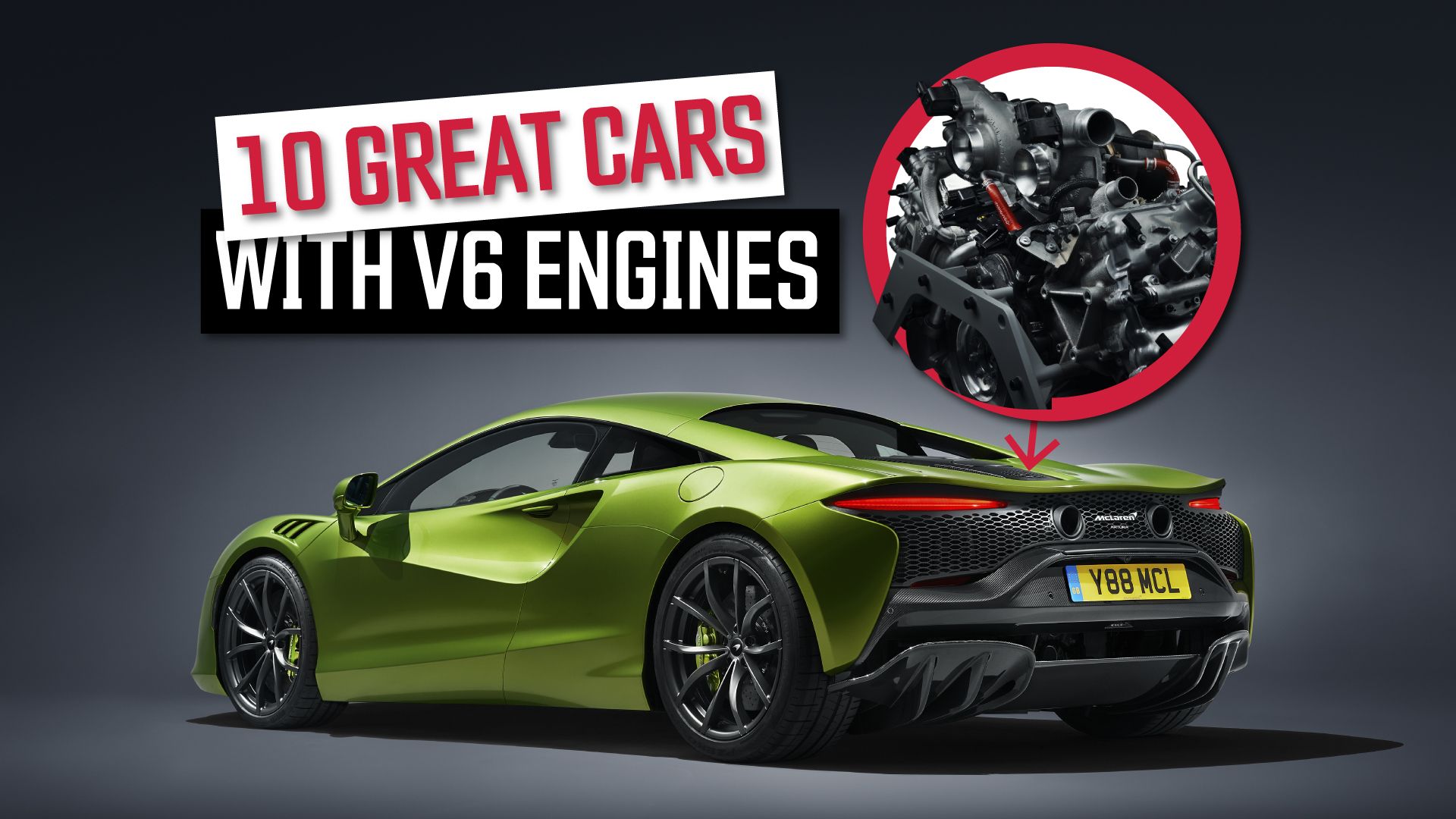
Related
10 Great Cars With V6 Engines
Don’t forget about V6 engines just yet. There are still loads of exceptional cars powered by this common engine configuration.
But you know what it doesn’t have? Music. Wringing it out to that impressive redline, the tone remains flat. It gets louder, and there’s a strong build to it, but there’s a depth missing from it that I’m searching for in a supercar, that sound that tingles the spine and makes your hair stand on end. The joy of a combustion engine is in the tonal changes as it builds engine speed, and this is a little too straightforward in how it does that for my liking.
2. McLaren’s Infotainment Could Be Better
The McLaren infotainment and connectivity system (MIS II) equipped in the Artura Spider is technically both the digital instrumentation and the 8.0-inch portrait-oriented touchscreen canted towards the driver. But while the former does all I asked of it, changing UI with the driver modes and flipping through menus as quickly as I needed it to, the main touchscreen didn’t operate quite as smoothly as I wanted. McLaren describes it as “delivering smartphone levels of responsiveness,” but when I open multiple apps, one on top of the other on my smartphone and then hit the home button, I don’t see each app minimizing one by one. I did in the Artura Spider.
When listening to audio and switching back to the navigation, there was also no simple way to skip a song. You either had to go back into media or go through the instrumentation menu (using a stalk behind the steering wheel) to the media section to skip a song. I love that the steering wheel doesn’t have buttons, but some hard buttons beneath the touchscreen would help with this.
3. One Plastic Control Let Down An Otherwise Incredible Tactile Experience
I firmly believe when you’re paying six figures for a car, every control you touch better feel good. In the Artura Spider, almost everything does… except the volume knob on the side of the infotainment screen. It felt plastic and was light and almost flimsy to the touch. It didn’t quite feel like it was going to break – McLaren would never let something like that make production, but the way it rotated and felt in hand was almost too light. Rotary controls at this level need to feel rich and indulgent, with a certain oiliness to their action as they move. The knurled rotary dials in anything from Bentley are a prime example, and I wish McLaren had given this one control a little more thought. When it’s something you seldom interact with, I can look past it, but this is a knob you’ll interact with a lot, and for that, I wish it felt a little more special.
For the record, everything else in the cabin feels spectacular, from the Alcantara steering wheel to the (optional) carbon fiber shift paddles, with their satisfying click and distinct rocker action (as you pull the upshift paddle towards you, the downshift paddle rocks away from you). The drive mode toggles on the instrument binnacle are perfect too, and set the blueprint for the feeling I want from the volume knob.
Will Any Of This Matter To Buyers?
People still buy the newest Ferraris with their horrible haptic controls, and if Aston Martin could get away with the horrible Mercedes COMAND interface for as long as it did, then buyers in this league clearly care more about the overall experience than the little details. Ultimately, you’re not buying a supercar like the Artura or the size of its frunk (5.7 cubic feet, for the record) or how good the optional Bowers & Wilkins sound system sounds (very, for the record). You’re buying it cause it looks special, feels special, and puts a smile on your face.
Does the Artura Spider do that? Yes, in a big way. Will these little perks make life with it easier? Definitely. But will these foibles make buyers turn around and leave the showroom? Not a chance. They’re minor niggles that you’ll simply get used to – just as I did in only a few hours with the Artura, and the pros far outweigh the cons here.

